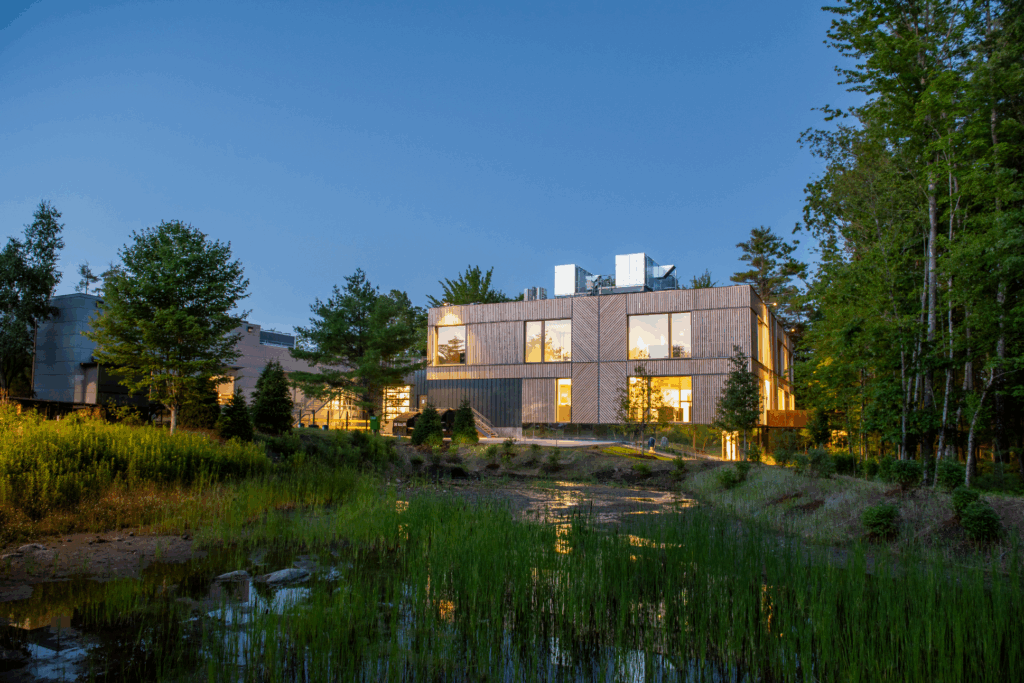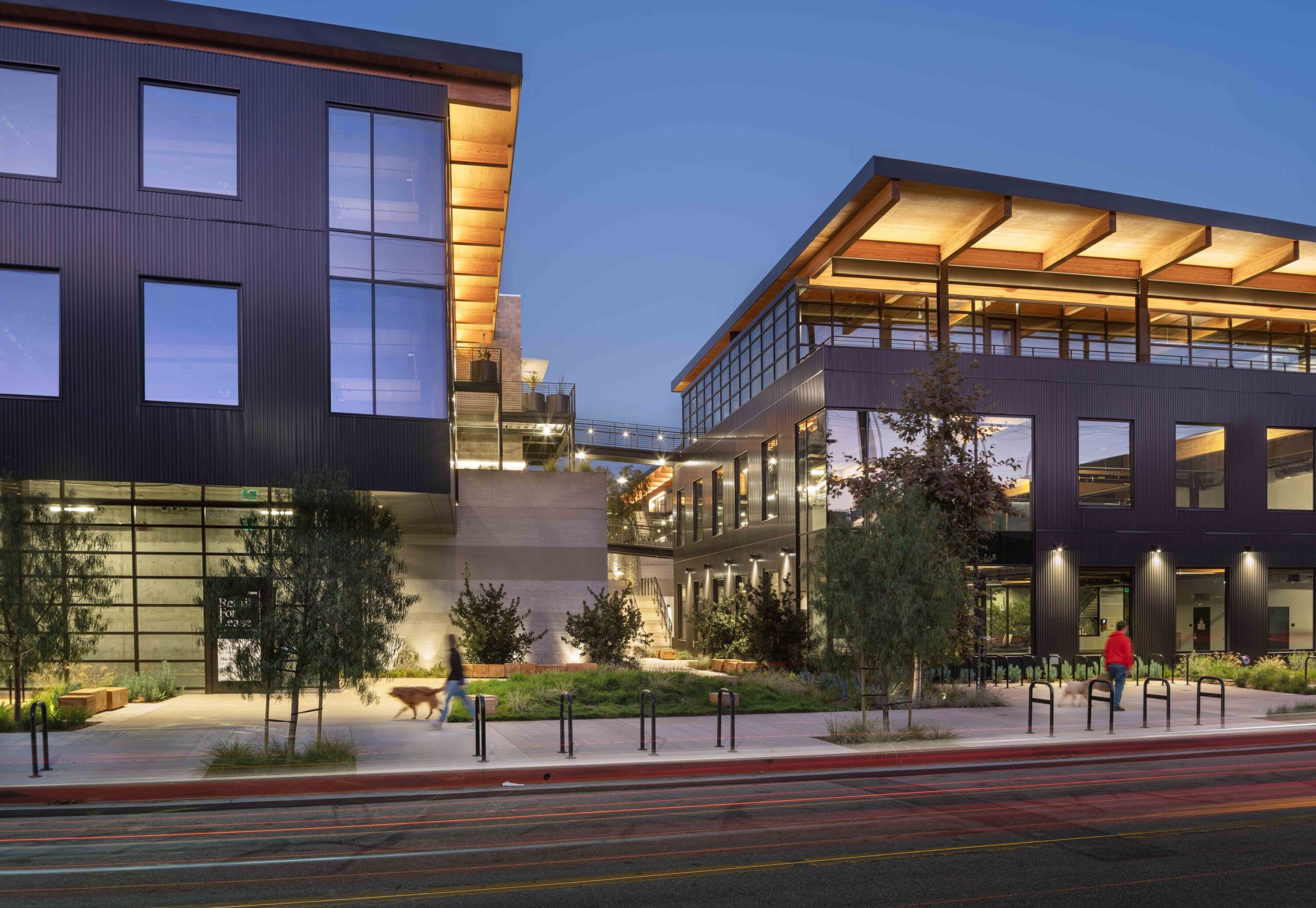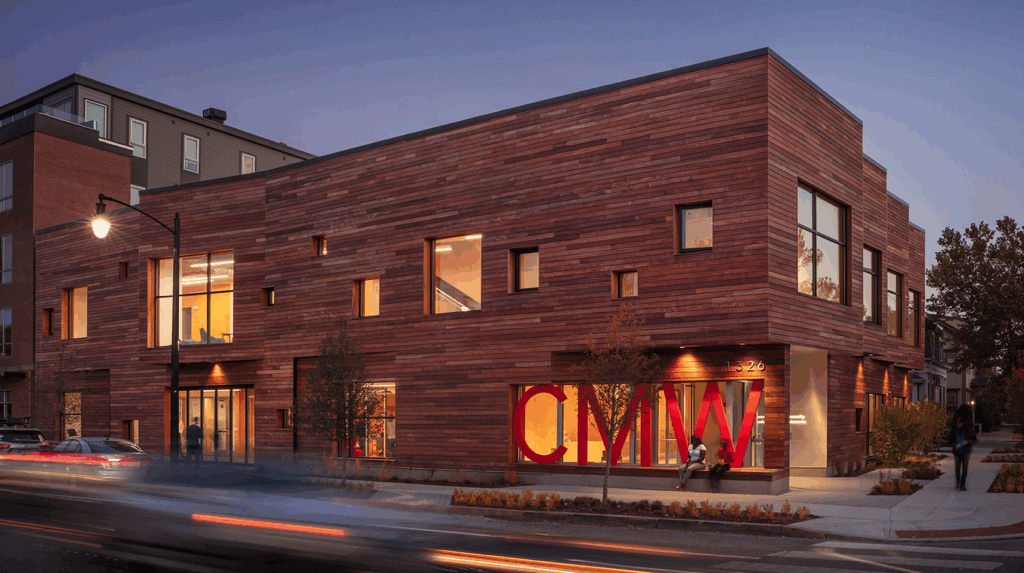Commercial, Mass Timber, Sustainability
McDonald’s Global Flagship in Chicago
Making Fast Food Earth Friendly: McD’s Adds CLT to Its Menu of Materials
For its latest Chicago-based flagship restaurant, the three-quarters-of-a-century old fast-food chain is shaking off its once plastic-clad bright colored interiors for an exposed wood and timber design, along with more sustainable, naturally hued materials.

In the 2016 biopic, The Founder, McDonald’s restaurant co-founder Ray Kroc, played by veteran actor Michael Keaton, asks Maurice McDonald what the Golden Arches are for. McDonald’s answer was simple: “It’s a way to make the place stand out.”
More than 75 years later, McDonald’s is continuing to find ways to stand out, this time through the unprecedented use of cross-laminated timber (CLT) in their Chicago-based restaurant at River North on Clark and Ontario Street.
It will be the first commercial use of CLT in the Windy City and is part of the global fast food chain’s efforts to continually adapt and reinvent its image, to meet the changing tastes of its customers. The newly renovated restaurant replaces a previous rock ’n’ roll memorabilia-themed building with a more environmentally-friendly design. The renovation includes an enhanced customer service experience with self-order kiosks, table service, mobile order, payment and delivery.

Wood Use
The 19,000-square-foot steel and wood timber building prominently features exposed CLT throughout. The choice to use timber came early in the process with the goal being “design authenticity.” As Carol Ross Barney of Ross Barney Architects explains some durable materials aren’t very authentic or sustainable. Research has shown that materials such as concrete, steel and heavy plastics have a larger carbon footprint than renewable materials, such as wood. CLT offers a great alternative, says Ross Barney, because the wood can be harvested and renewed at a more regular interval, it has a relatively low carbon footprint, and you can use it like any panelized material such as precast concrete or steel.
Environmental Impact
In addition to the use of CLT, the restaurant features more than 70 trees at ground level, a vegetated roof space and a floating glass garden of ferns and white birch trees. The roof features edible plants including apple trees that will be harvested and donated to the Ronald McDonald House. Native and drought resilient plants are being used throughout the landscape along with permeable pavers for the lot surface to minimize irrigation and reduce storm water runoff. The restaurant will benefit from enhanced energy performance with an on-site solar panel array for renewable energy collection to offset part of the restaurant’s non-renewable energy consumption. Other features include interior and exterior LED lighting; and energy efficient kitchen and HVAC equipment such as energy saving freezer/coolers, low oil fryers and energy efficient fans.
Project Details
- Architect
- Ross Barney Architects
- Owner/Client
- McDonald's
- Landscape Architect
- Ross Barney Architects
- Interior Designer
- Landini Associates
- Structural Engineer
- Goodfriend Magruder Structures
- Mechanical and Plumbing Engineer
- WCW Engineers
- Electrical, IT, Security Engineer
- Dickerson Electrical Engineers
- Lighting Designer
- Schuler Shook
- Civil Engineer
- Watermark Engineering
- Surveyor
- Compass Surveying
- PV Solar Canopy Design / Build
- Day and Night Solar
- Construction Manager
- Sevan Solutions
- Contractor
- Walter Daniels Construction









